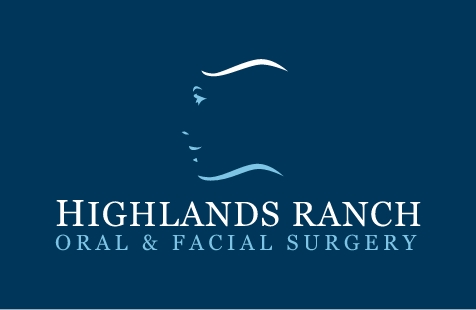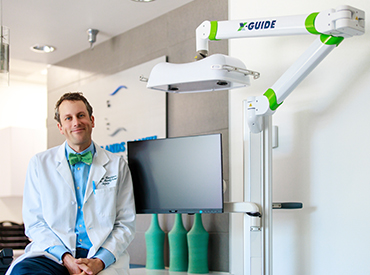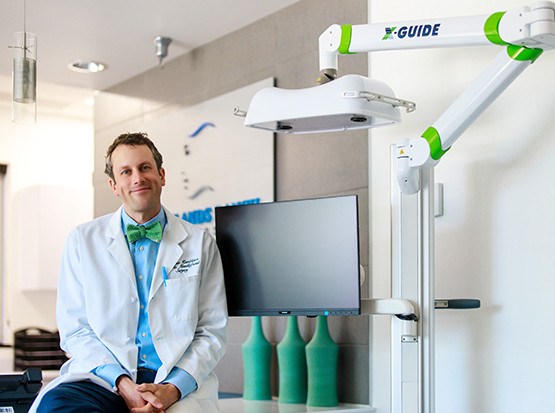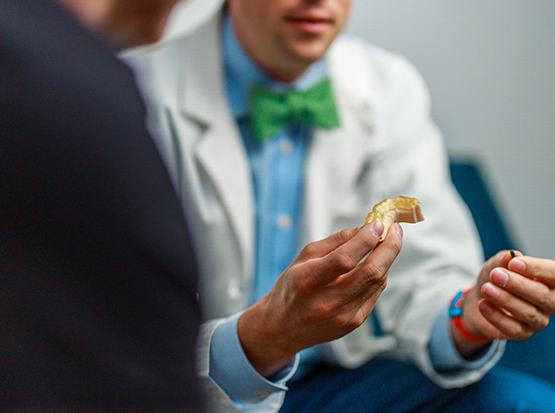 There is only so much room in your mouth to accommodate all of your teeth. The wisdom teeth are often the last set of teeth to come in, and sometimes they have to be removed because there is not enough room, they do not fully erupt through the gums, or they come in at an odd angle. Wisdom teeth removal is an incredibly common procedure and one that dental professionals routinely perform.
There is only so much room in your mouth to accommodate all of your teeth. The wisdom teeth are often the last set of teeth to come in, and sometimes they have to be removed because there is not enough room, they do not fully erupt through the gums, or they come in at an odd angle. Wisdom teeth removal is an incredibly common procedure and one that dental professionals routinely perform.
You will likely be referred to an oral surgeon to have your wisdom teeth extracted, as it is a surgical procedure. The oral surgeon will make a small incision in the gums if the teeth have not broken through on their own, then will extract the entire tooth and stitch up the gums.
Recovery After Wisdom Teeth Removal
Immediately following surgery, your gums will be sore and they may bleed a little. This is completely normal. Soon the blood will clot, and the wounds will begin to heal. However, you do not want to dislodge the clot or further irritate your gums. That means you will have to be careful about what you eat for several days.
10 Foods to Eat After Wisdom Teeth Removal
You will want to focus on eating soft foods that will not put much pressure on your gums. But that does not mean living on ice cream; you will also want to ensure you are getting all of your nutrients to help promote healing.
1. Ice Cream
One of the first foods you might eat after surgery is ice cream, as the coldness can help alleviate pain and reduce swelling. Plus, it quickly melts in your mouth with no chewing required. Stick with plain ice cream that does not have mix-ins such as pieces of chocolate, candy, or nuts.
2. Smoothies
You can pack a lot of nutrition into a smoothie. It is easy to blend up some of your favorite fruits (and vegetables!) into a healthy drink to sip on. Just remember not to use a straw, as the suction can dislodge the clots or pull on stitches where your wisdom teeth were removed.
3. Soup
Start off with broth or a pureed soup that does not have small chunks that can get stuck in the tooth sockets where your wisdom teeth once were. Blended soups can contain a lot of vitamins and minerals. Make sure the soup is lukewarm or cool, not piping hot.
4. Yogurt
Yogurt requires very little, if any, chewing, so it goes down smoothly. Greek yogurt, in particular, contains a lot of protein and calcium, which are good for a well-balanced diet.
5. Applesauce
Applesauce is easy on the gums as well. Just be cautious about eating too much because it can be high in sugar.
6. Jell-O or Pudding
Once again, these are very soft foods that put minimal pressure on your teeth and gums as you eat. They also come in a variety of flavors.
7. Scrambled Eggs
As your gums begin to heal, you can eat more solid – but still soft – foods such as scrambled eggs.
8. Oatmeal
Warm, not hot, oatmeal contains a lot of nutrients, and the fiber can help you stay fuller longer.
9. Avocado
You might want to skip the toast for now, but you can munch on avocado. It is packed with healthy fats and is very soft to eat.
10. Steamed Vegetables
Pick a few of your favorite vegetables and steam them until they are very soft and break apart easily in your mouth.
4 Foods to Avoid After Wisdom Teeth Removal
There are also certain types of foods that you will want to steer clear of immediately following surgery.
1. Crunchy Foods
Anything that is hard and crunchy like raw carrots, apples, pretzels, chips, or crackers.
2. Chewy Foods
You will want to avoid things such as caramel, fruit snacks, and gum that can stick to your teeth, as well as foods that are tough to chew like jerky or steak.
3. Grainy Foods
While sides like mashed potatoes or soft macaroni and cheese are fine, you will want to skip any rice, quinoa, or couscous for a while as it can get stuck in the space left from the tooth extraction.
4. Citrus Foods
Citrus is acidic, and it can irritate your gums. It can be painful if you get orange juice or lemon juice on your incisions while they are healing.
You will also want to avoid using a straw, as this can increase your risk of developing a dry socket because of the force of the suction. A dry socket occurs when the clot that was protecting your tooth socket becomes dislodged, the nerves are exposed to the air, and the area dries out.
Returning to Normal Eating
You will want to continue eating soft foods for the first few days after surgery. As your gums heal, you can slowly incorporate semi-soft foods that require a bit more chewing. Try a bite or two to start and see if you have any pain. If you have pain, go back to something softer. If it feels okay, you can keep eating.
Within about a week or so, you should be able to return to most of your normal eating habits. You may still want to be cautious about foods that are very hard or crunchy because they typically require more pressure from your molars. Since this is right next to the extraction site, it may still be slightly sensitive.
Make sure you follow any instructions provided by your oral surgeon and schedule any follow-up appointments. Contact your oral surgeon if you have questions or concerns.
Schedule a Consultation Regarding Wisdom Teeth Removal
Dr. Hambleton will take the time to evaluate your teeth and discuss his recommendations regarding extraction and next steps.
If you are unsure about whether you need to have your wisdom teeth removed, or are looking for a skilled oral surgeon to perform the procedure, contact Highlands Ranch Oral and Facial Surgery.




